| Home |
| Acknowledgments |
| Conventions |
| Glossary |
| Maps |
| References |
| Links |
| Articles |
| Thumbnails |
| Species
list |
| Family |
| Next
species |
Additional Photos

side
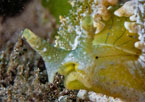
front
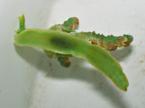
underside
mantle lobes

more lines
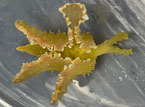
few lines

feeding
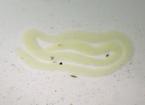
egg mass
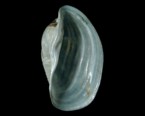
shell
_______________
GALLERY

Lobiger viridis Pease, 1863
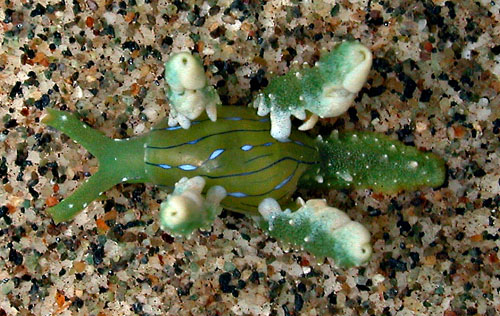
| Maximum size: about 40 mm. Identification: This distinctive species is brilliant green with elongate, frilled lobes projecting from the edges of its parapodia. Bright blue spots connected by dark blue-green lines show through its transparent shell. (Note 1) Natural history: Lobiger viridis is a rarely seen species found in tide pools and shallow rocky habitats at depths of < 1 to 6 m (< 3 to 20 ft) where it is associated with various algae of the genus Caulerpa. It is found in protected to exposed locations. Mature animals are diurnally active but may remain in the open when resting at night. When disturbed, they "flare" the mantle lobes, presumably to elicit a startle response in predators, and may autotomize the lobes. They can also emit a milky fluid. We have observed them feeding on Caulerpa taxifolia, Caulerpa ceratularioides, Caulerpa serrulata and the large form of Caulerpa racemosa in dishes. (Note 2) Also, Sarah Milisen observed it eating Caulerpa lentillifera in the NELHA tanks. (Note 3) The egg mass is a tightly coiled, cream spiral and the eggs hatch in about five days in the laboratory. Distribution: Big Island, Maui, Oahu, Kauai and Midway: widely distributed in the Indo-Pacific Taxonomic notes: It's listed in Kay, 1979 as Lobiger souverbii Fisher, 1856 but that name has now been restricted to the Caribbean population. Photo: CP: 8.5 mm: Hekili Point, Maui; Oct. 7, 2002. Observations and comments: Note 1: The blue spots on a green-gold background aren't as precisely matched to the blue and gold ocelli found in the sea hares Stylocheilus striatus and Phycophila euchlora as are the markings in some other possible mimics. But, perhaps they are close enough so that Lobiger viridis is still deriving some benefit from the resemblance (since the sea hares are known to concentrate toxins from the cyanobacteria they eat)? Note 2: A captive animal with a shell length of 1.8 mm and a missing mantle lobe regenerated the lobe and grew to a shell length of 5.2 mm in 60 days. It was fed primarily on Caulerpa serrulata. Note 3: Two animals found feeding on Caulerpa lentillifera in the NELHA tanks showed greatly reduced development of the blue lines. Since both animals showed the trait, perhaps its due to their diet (or some other factor in the tanks...)? A very large animal found later had no obvious lines and enhanced gray spotting. See photos. |
| Thumbnails |
Species
list |
Family | Next species | Top |